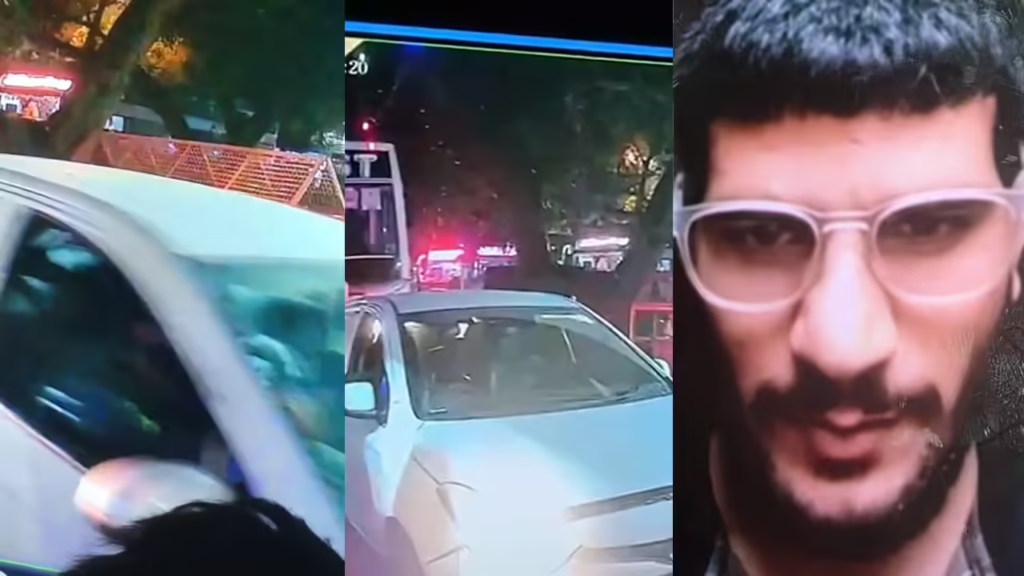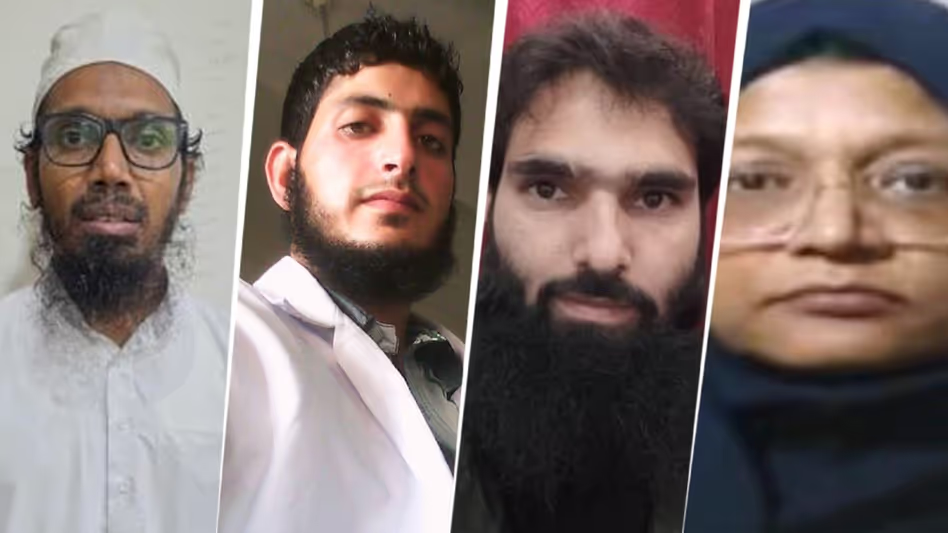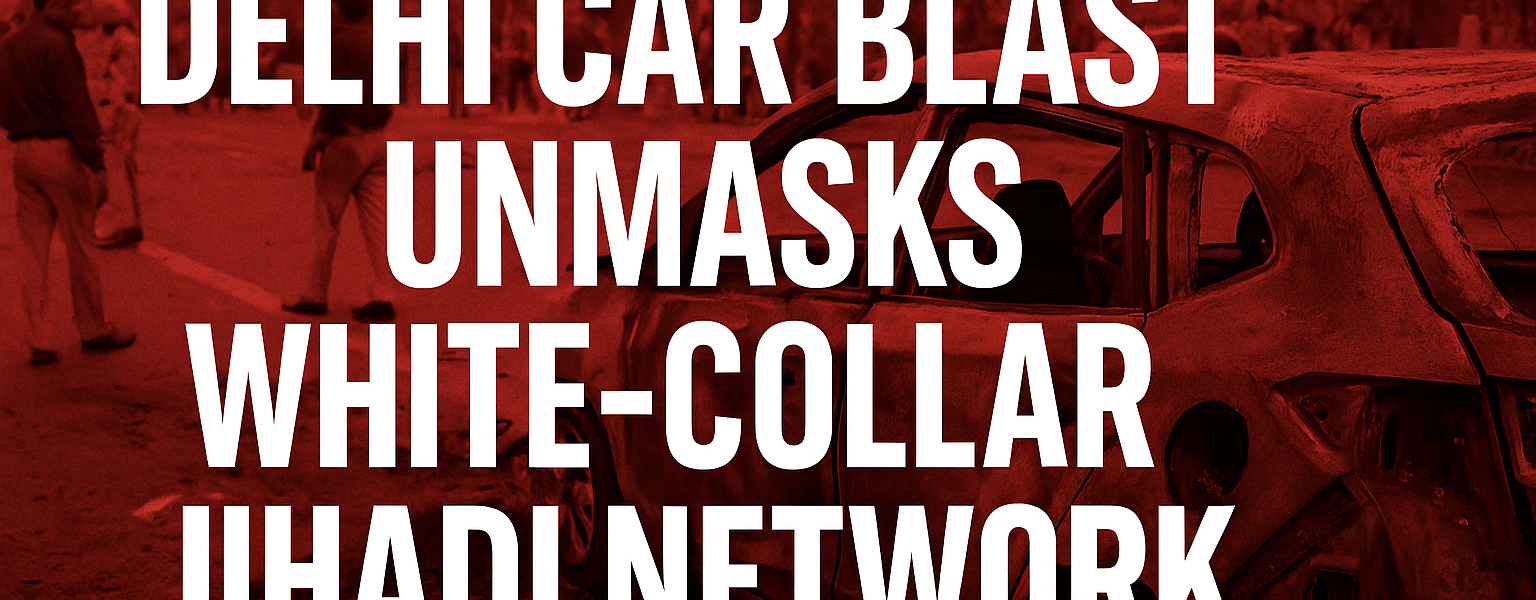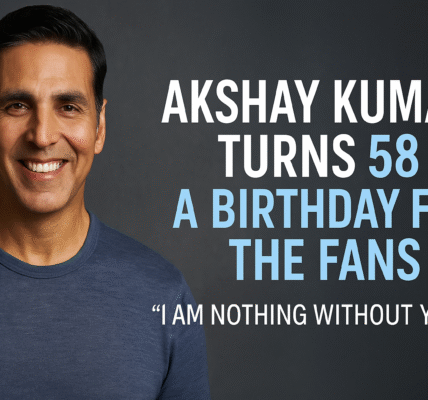Delhi Car Blast 2025: White-Collar Jihadi Network of Doctors and Clerics Exposed | NIA Uncovers Multi-State Radical Module
Delhi Car Blast Unmasks White-Collar Jihadi Network: A Chilling Warning for India’s Security Grid
The Blast That Shattered Delhi’s Calm
On the evening of November 10, 2025, a powerful car explosion near Delhi’s Red Fort killed eight and injured over 20 people. It was the first major terror Delhi Car Blast in over a decade, immediately sending shockwaves through the nation. The blast site—Chandni Chowk’s Gate No. 1 Metro intersection—turned into a scene of carnage within seconds. Prime Minister Narendra Modi, while in Bhutan, declared:
“The conspirators behind this will not be spared. Our agencies will get to the very bottom of this.”
(Source: Reuters, Nov 11 2025)
The NIA has taken over the probe and registered the case under the Unlawful Activities (Prevention) Act (UAPA), India’s toughest anti-terror law.
The White-Collar Terror Module

In a series of nationwide raids across Faridabad, Saharanpur, Srinagar, and Delhi, investigators made a startling discovery: five doctors and three clerics (maulavis) have been arrested for allegedly orchestrating the attack.
According to sources cited by various media houses, these professionals formed part of a “white-collar jihadist network”, using medical institutions and charities as camouflage for radical financing and planning.
- Five Muslim doctors were allegedly radicalised and trained to manufacture and transport improvised explosive devices (IEDs).
- The Hyundai i20 car used in the blast was traced back to a Kashmiri doctor from Pulwama, identified as a key operative.
- Nearly 2,900 kg of ammonium nitrate, detonators, and firearms were seized from multiple safehouses linked to the group.
A Radical Network Rooted in Faith and Profession

Preliminary interrogation has revealed ideological indoctrination through online Islamic radical channels and closed WhatsApp groups managed by three clerics from Delhi, Meerut, and Srinagar. These religious figures reportedly facilitated recruitment among medical students, promoting an extremist narrative under the guise of charity and education.
Security analysts have drawn parallels with past networks of ISIS-inspired Indian professionals — engineers and doctors — who leveraged their education and access for terror logistics. This marks a disturbing evolution from street-level Islamic radicalisation to institutional infiltration.
Why This Threat Is Exceptionally Dangerous
- Stealth and Credibility – Doctors and clerics enjoy social trust, allowing radical operations to remain undetected.
- Multi-State Reach – Sleeper cells across at least four states indicate coordinated planning.
- Symbolic Target – The Red Fort, an emblem of India’s sovereignty, was clearly chosen for psychological impact.
- New Generation Radicalisation – The involvement of well-educated youth suggests ideological rather than economic motivation.
Counter-terror officials warn that the Delhi Car blast may only be the beginning, as digital chatter points to plans for synchronised attacks in other metros.
Intelligence & Security Implications
Experts believe this case exposes vulnerabilities in India’s counter-radicalisation framework. Experts, notes:
“We are entering an era of educated jihad — ideologically driven, socially embedded, and globally connected.”
The NIA has reportedly expanded its investigation to include financial flows from Gulf countries and encrypted communication channels like Telegram and Signal.
Community and Political Response
While condemnation has been universal, the government faces the dual challenge of enhancing security without communalising the crisis. Home Minister Amit Shah has called for a nationwide review of the institutional backgrounds of those arrested and urged tighter surveillance of foreign-funded NGOs and religious seminaries.
Unanswered Questions
- Were the clerics linked to Jaish-e-Mohammed or Lashkar-e-Taiba?
- Is there foreign involvement, or are these indigenous radical cells?
- How were explosives smuggled and stored in urban residential areas?
- Were there security lapses despite the capital’s high alert level?
Officials admit that this operation’s sophistication “suggests possible external coordination.”
The Bigger Picture: Rising Radicalism in India
The Delhi car blast fits into a worrying pattern. In the last 18 months, multiple arrests in Gujarat, Kerala, and Tamil Nadu revealed Islamist sleeper cells using professional covers — a sign of trans-state ideological spread.
Security think tanks have urged the creation of a National Radicalisation Index, tracking online activity and potential extremist recruitment zones.
Conclusion: India’s Wake-Up Call
The Delhi car blast is not merely an act of terror — it’s a warning of a new wave of jihadist infiltration through professional classes. For a country striving for internal stability amid global turmoil, the emergence of educated radicals poses an existential challenge.
As investigations widen, the question remains: how many such “white-collar sleeper cells” still lie dormant across India’s cities — waiting for their turn to strike?
Delhi Car Blast 2025, Red Fort Explosion, White-Collar Jihad, Islamic Radical Network, NIA Investigation, Terror Module India, Sleeper Cells, Doctors Arrested, Clerics Involved, India Security Threat
Discover more from
Subscribe to get the latest posts sent to your email.







